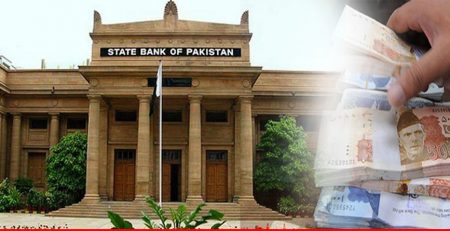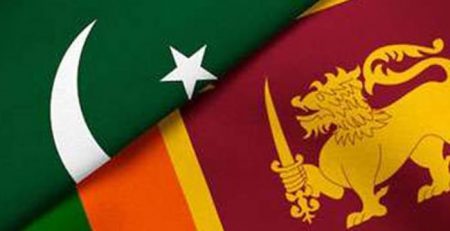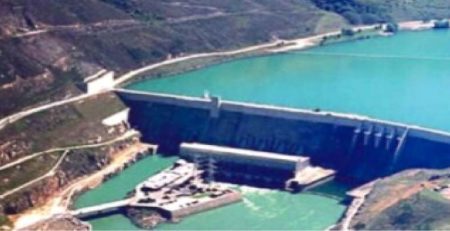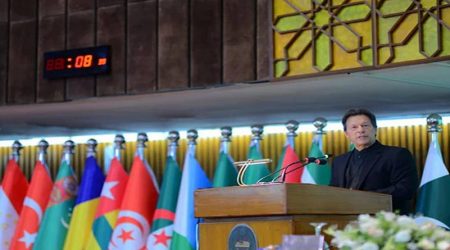Economic future of Pakistan
Pakistan has kick-started the process of dialogue, consultation and has engaged the policy institutes for assistance. Deliberations are going on with two specific objectives.
First, Pakistan is searching for economic opportunities where it has scope for engagement. Second, it wants a reliable and trusted partner, which can act as an anchor.
Fortunately, Pakistan has a galaxy of reliable and trusted friends including China, Indonesia, Turkey, the Gulf countries, Western friends, the US, etc, which can be good economic partners.
However, China stands out among all, due to its economic size, global clout and unique and all-weather relationship with Pakistan. Besides, China is already deeply engaged in economic cooperation through the China-Pakistan Economic Corridor (CPEC) and non-CPEC programmes.
It is a less known and discussed fact that before signing the CPEC deal, China’s total investment in Pakistan was around $15 billion. Huawei, Haier and Zong were among the major Chinese investors.
Huawei started its operation in 1998 and now it is one of the major taxpaying tech companies with $43 million in 2018.
Apart from creating jobs (16,000 direct and 25,000 indirect), Huawei is also investing in talent and human resources development through the Huawei ICT Academies, Huawei ICT Competition and Seed for Future.
Haier is another Chinese company, which started its journey with $45 million and now its operations are estimated to be worth $1 billion. It is one of the leading brands in home appliances in Pakistan.
Zong helped Pakistan in revolutionising the telecom sector. It is the biggest data provider with 55% share and leading investor in the telecom sector with investment of $2.2 billion.
Although the cooperation was going well, President Xi Jinping’s visit to Pakistan in 2015 changed the whole dynamics. Pakistan and China signed the CPEC deal during his visit.
It is a comprehensive programme, which has answer for almost all economic challenges of Pakistan.
The first phase of CPEC assisted Pakistan in creating 85,000 jobs directly and 200,000 jobs indirectly by engaging more than 100 SMEs. It means 285,000 families benefited from the phase-I.
Besides, CPEC-related energy projects provided jobs to 23,000 people during the Covid-19. CPEC’s contribution to managing load-shedding in Pakistan is a well-established and acknowledged fact.
It is expected that the second phase of CPEC will trigger a new era of economic growth and development. With emphasis on industrialisation, agricultural development and modernisation of science and technology, Pakistan will reap benefits of sustainable development.
Cooperation in social development will help Pakistan to reduce the inequalities in society.
Renewable energy (under CPEC and outside of CPEC) is another area where China is working to enhance its footprint.
Chinese companies, in partnership with Pakistani companies, have started to build Diamer-Bhasha Dam, which has multidimensional benefits.
It has storage capacity of 6.4 million acre feet (MAF) of water and will generate 4,500 megawatts of cheap electricity. It will create 16,000 jobs during the construction phase.
The dam will help Pakistan to irrigate 1.2 million acres of land, which will give a boost to employment for the unskilled labour.
Besides, it will help to combat food insecurity and raw material shortages for the industry through enhanced production of food and non-food products.
Dasu, Karot and Azad Pattan projects are prominent examples in the field of renewable energy.
In a nutshell, China, through CPEC and non-CPEC cooperation, has proved that it will stand by Pakistan, no matter what is the situation.
On the contrary, Pakistan’s Western friends and allies in the war on terror did not show much interest in solving the country’s economic problems. Rather, they used and are still using international organisations like FATF, IMF and other institutions to bend Pakistan.
Lessons to learn
It is not rhetoric; it is based on an analysis of the global political economy and power play. The analysis suggests two lessons for Pakistan.
First, no matter what Pakistan does, the US and the West will never stand with Pakistan, until it abandons CPEC and China, which is not possible.
Second, the US and West will prefer India over Pakistan, even if Pakistan abandons China. It has a strong economic rational.
It is a well-known fact that the US and China are entangled in an intense economic and trade war. Owing to the huge difference in market size, the US cannot compete with China.
China is a huge market of 1.4 billion people. It can face off the economic war by giving impetus to the domestic economy. China has already started the process by adopting the dual circulation model and transiting people into the middle and upper class.
It is expected that 400-600 million people will be graduated to the middle class till 2035. HSBC claims that 160 million will be added till 2025.
Besides, it is expected that 300-400 million people will be graduated to the upper class. It means 800-1,000 million people will be changing the class, which will give a huge boost to the domestic consumption.
So, China can face any type of sanctions and sustain the high economic growth.
On the contrary, the US is a market of only 333 million people, which has no comparison with China. European countries, the traditional allies of the US, also cannot help much as their markets comprise only 750 million people. Moreover, both markets are saturated and don’t provide much room for expansion.
In this situation, India emerges as the only option for the US. India is cognisant of the fact and is trying to exploit the situation.
For example, on the one hand, India is part of the Quad 2+2 and other Western initiatives and has refused to join the Belt and Road Initiative (BRI). Owing to this, India is enjoying a wavier on energy imports from the sanctioned countries.
On other hand, India is benefiting from China through the Asian Infrastructure Investment Bank, New Development Bank of BRICS, Shanghai Cooperation Organisation (SCO) and by enhancing trade. Trade between China and India reached $125 billion in 2021.
In this context, Pakistan needs to devise a wise and smart policy by adhering to two fundamental principles.
First, Pakistan should stick firmly to the Pak-China relationship policy. Second, Pakistan should tell the US that it is ready to work with Washington for a mutually beneficial relationship but without any conditions.














Leave a Reply